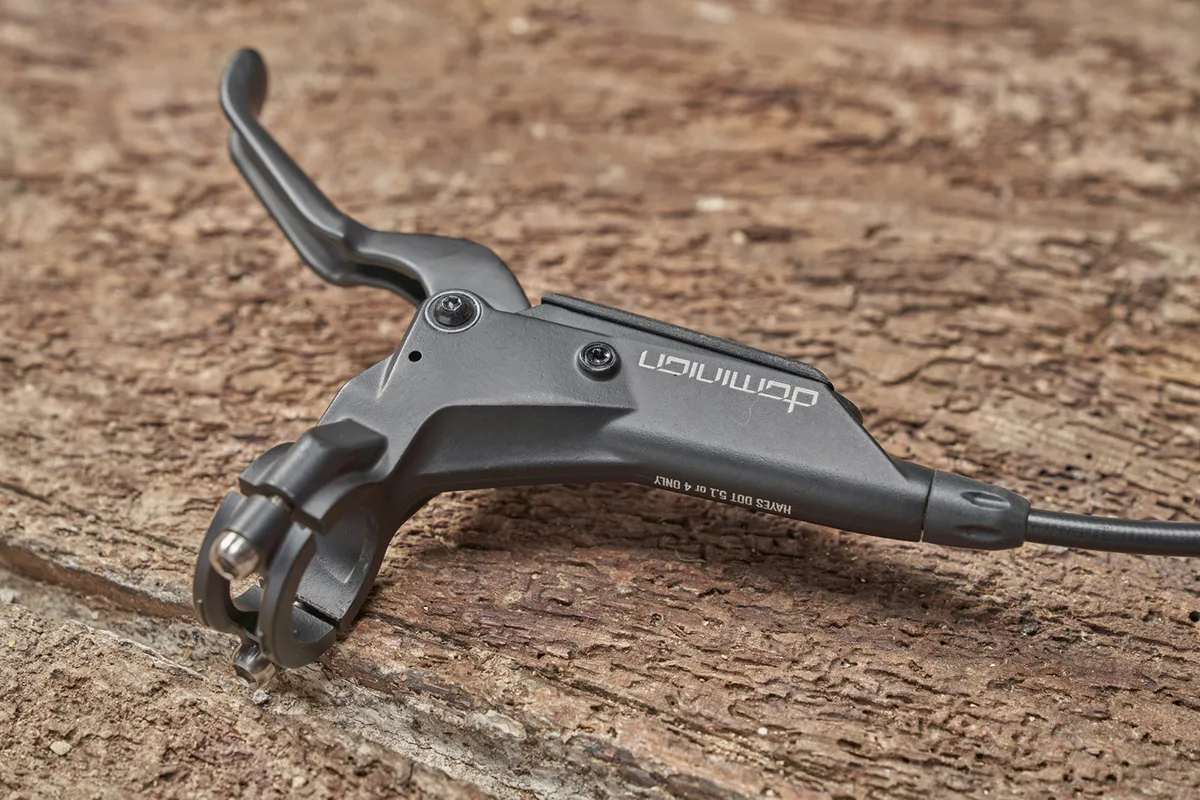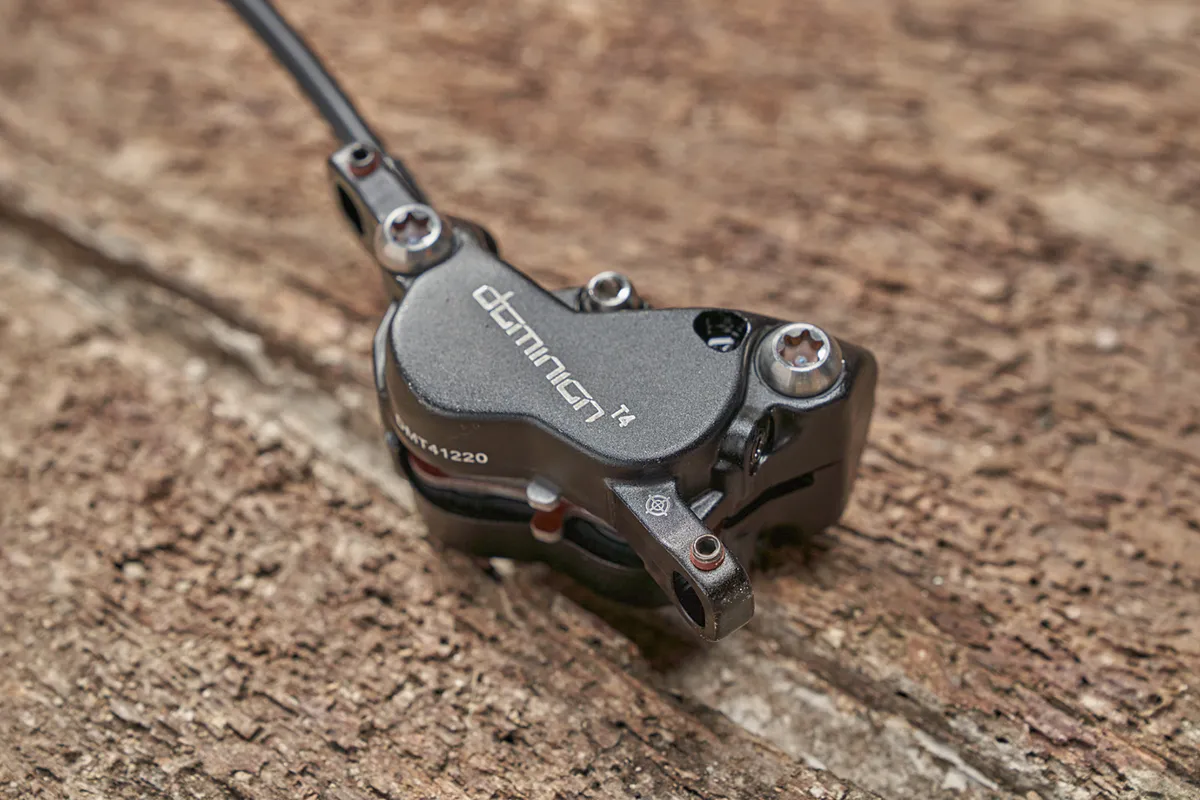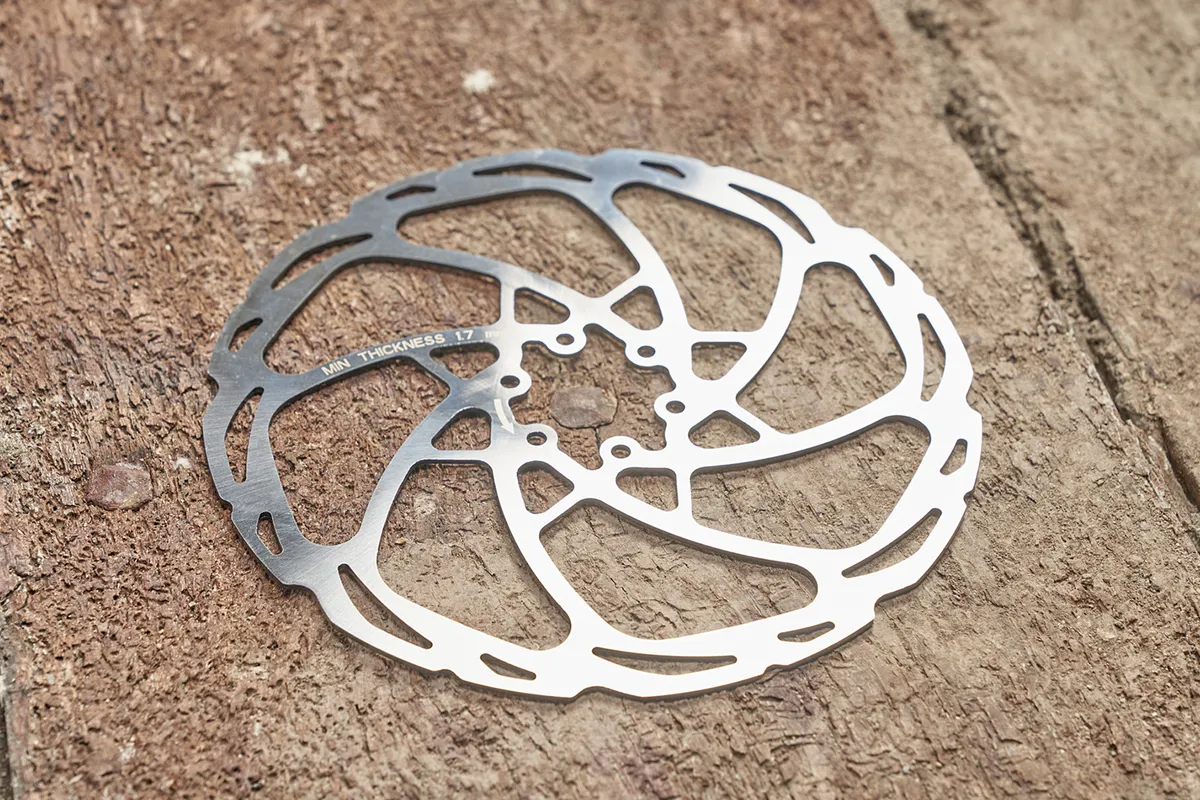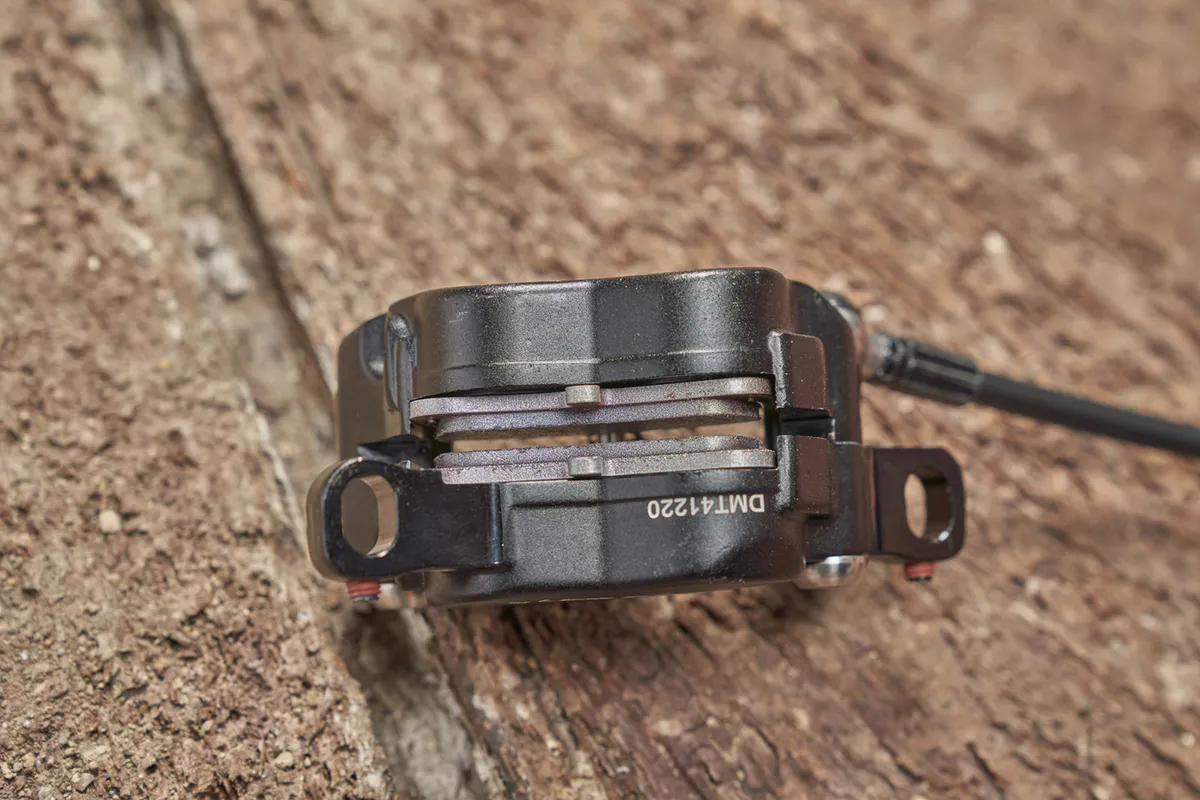Hayes’ Dominion T4 is the lighter-weight sibling of its cheaper, and more established, Dominion A4 enduro and DH brake. This limited-edition stopper comes with lightweight hardware to shave roughly 40g off its weight.
That shouldn’t be at the cost of performance, though, with Hayes still dedicating this brake to gravity riders with deep pockets.
Hayes Dominion T4 brakes specification

The lever body has a flip-flop design, so works on either side of the bar. It’s held in place with a two-piece clamp that makes fitting relatively easy (though hinged clamps tend to be easier). The narrow, fine-threaded clamp bolts take quite a bit of screwing in.
Its simple architecture meant I had no issues fitting it around Shimano or SRAM shifters, while Matchmaker and I-Spec clamps for both shifter types are also available.
While the A4 brake uses a textured alloy lever, the T4 utilises a carbon lever blade, designed by Reynolds.
Though similarly shaped, it’s a touch longer than a Shimano brake, but shorter than a SRAM alternative. It has a comfortable upturned end, but the smooth carbon finish is a tad slippery. The blade pivots on sealed bearings for a smooth action.
I tested the standard lever blade, though there’s another (alloy) option for those with smaller hands, that sits naturally closer to the bar.
The lever has both reach and bite-point adjustment, using small Allen bolts for both. I’d like them to use slightly bigger Allen bolt heads because they feel a little fiddly, and aren’t particularly deep.
The range of adjustment in lever reach is generous, and I measured a 1cm range of bite-point adjustment with the factory bleed. However, it’s worth noting that Hayes builds the brake with just a small amount of free-stroke before the bite point.
The bite-point adjustment is on the inside of the lever, and access with a multi-tool is tight. The lever-reach bolt is easily accessed, though.
Other weight-saving features include a composite reservoir cap and titanium hardware. The hose is Kevlar-reinforced, designed to be stiffer under high braking loads.
The brake uses DOT5.1 fluid and the two-part, four-piston caliper has a pair of smart features. There are two bleed ports on the back of the caliper, to help get every last bit of air out of it during a bleed.
It’s not necessary to use both, but the option is there if you’re struggling for a solid feel.

The mounting tabs also feature a grub screw on each, dubbed ‘Crosshair Caliper Adjustment’. Adjusting these helps line the caliper up over the rotor, before securing with the main bolts, which can otherwise act to twist the caliper during tightening.
They also help ensure a consistent position, if you remove and then refit the brake caliper.
The pads are proprietary, and have a longer shape than most, with plenty of pad material. Our brakes shipped with sintered pads, with a lighter-weight alloy backing plate.
The hose banjo is adjustable, to help with clean hose routing at the rear of your bike.
Hayes’ D-Series rotor is 1.95mm thick. It has been designed to reduce noise and vibration, and to be used with sintered and semi-metallic pads.
Hayes Dominion T4 brakes performance

The bedding-in process was relatively fast, with the Dominion T4s getting up to power with relatively few hard stops.
The factory bleed feels good, with a lever feel that gives power early in its relatively short overall stroke. There’s a slight lever softness at the bite point, that some may feel is a little spongy for their tastes. The lever stroke itself is nice and light in feel.
The initial bite isn’t as snappy as brakes such as Shimano’s four-piston XT M8120s, but it is grabbier than Magura’s offerings.
Power progresses nicely through the lever’s stroke, in a linear fashion, and getting the maximum power (of which there is plenty) is easy to achieve. As such, hand fatigue is reduced becauase the brake requires less effort to haul you to a stop.
I found it easy to scrub speed with the Dominion, with just a gentle squeeze of the lever delivering plenty of power to slow me down. Overall power levels are good, though if you need the optimum stopping power, there are slightly better brakes out there.
However, the vast majority of riders should find the Dominions offer more than enough stopping performance, combined with excellent modulation. I’ve also found the Dominions to be reliable longer-term, experiencing no issues with sticky pistons.
If I had to complain, the slippy carbon lever won’t appeal to all. The price is high, too, but there are levers from other brands that feel more ‘premium’ in finish, despite the carbon lever blade.
I also found the location of the lower pair of pistons can interfere with some +20mm Post Mount adaptors, especially Shimano-style adaptors. In this case, I used a Hope HBML adaptor, which has more room for calipers.
Hayes Dominion T4 brakes bottom line

This is an expensive brake, but it’s backed up with some really nice features, such as the dual bleed port and caliper-aligning grub screws.
The brake feel impressed me, as did the ease with which power was on tap and the minimal finger fatigue. Longer-term, the signs are good, with freely moving pistons suggesting the brakes should remain reliable.
How we tested
This year, our expert reviewers have tested a selection of the best mountain bike brakes, split into two broad genres.
First, there’s a selection of the most powerful stoppers, aimed at downhill, enduro and electric mountain bike riders. We’ve kitted these brakes out with 200mm rotors front and rear to get the most out of their four-piston calipers and tested them on an e-MTB and our enduro bikes.
The second cohort is targeted at cross-country and downcountry riders, who still need plenty of stopping power without upsetting the scales. These two- and four-piston brakes grab onto 180mm and 160mm rotors in our testing, fitted to our downcountry test rig.
Before hitting the trail, we gave each brake a full going over in our workshop. Hoses were cut to get the brakes fitting neatly and to check out how easily they’re bled at home. We weighed and measured them, making sure no detail was missed.
We lined our levers up against SRAM and Shimano shifters to see which play nicely and weighed up the balance of cost and spec in order to reach our conclusions.
Brakes on test
Product
| Brand | hayes |
| Price | 340.00 GBP,325.00 USD |
| Weight | 280.0000, GRAM () - |
Features
| br_brakeType | hydraulic_disc |
| Features | Hose length: 970mm / 1800mm Aimed at: DH / Enduro |
